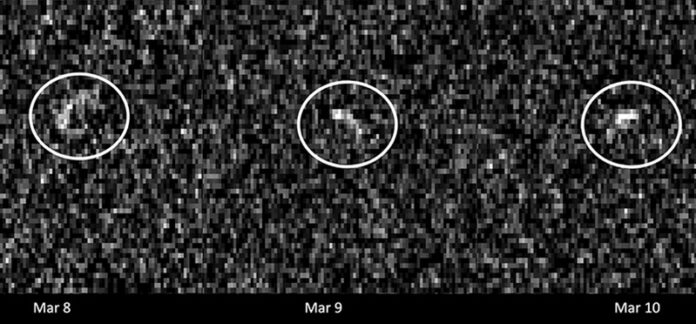
Key Takeaways
- With 3I/ATLAS hidden by the sun’s glare, insurers risk a dangerous lull in risk planning.
- Scientists warn Apophis will pass within satellite orbits in 2029, underscoring the need for preparation.
- A lack of transparency in space-risk modeling could leave policyholders and shareholders exposed.
USA HERALD – The interstellar object 3I/ATLAS, one of the strangest visitors ever observed moving through our solar system, has disappeared from Earth’s view for now, obscured by the blinding glare of the sun. For astronomers, this disappearance is temporary. They will resume direct monitoring when it reemerges from behind the solar veil. But for the insurance industry, the silence presents a troubling picture. While scientific eyes are off the object, major carriers appear to be treating the lull as permission to pause their own modeling and preparations.
That perception, if accurate, could prove catastrophic. Insurance companies have a duty not just to respond to claims but to foresee and quantify risks that can destabilize portfolios and devastate policyholders. Unlike fire, flood, or hurricane, a space-related catastrophe is untested territory for the modern insurance industry. Yet the duty of care owed to shareholders, investors, and insureds is no less binding when the danger comes from above.
The industry has no recent historical benchmark for a planetary event that causes widespread economic and physical damage on Earth. While impacts like the Chicxulub asteroid strike are millions of years behind us, the accelerating discovery of potentially hazardous asteroids and unpredictable cometary behavior makes ignoring the risk indefensible.
Insurers already model “once-in-500-years” hurricanes and mega-quakes. The omission of space-event risk assessments leaves a dangerous blind spot. If a cometary fragment were to survive entry and strike a populated region, questions would immediately arise as to how claims should be handled. Would a homeowner’s policy cover such destruction? Would “acts of God” exclusions be invoked? How would reinsurance markets respond when trillions of dollars in losses present themselves overnight?
The industry’s lack of transparency in answering these questions is, to some, tantamount to dereliction. Risk models are only as credible as the assumptions behind them, and in the case of space threats, most assumptions remain hidden from policyholders who deserve answers.


